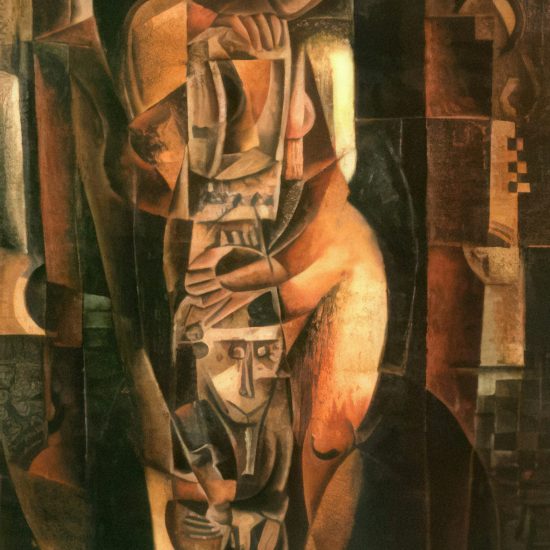Cubism, one of the most influential art movements of the 20th century, revolutionized the way we perceive and represent reality. Originating in the early 1900s, it has left an indelible mark on various forms of art and continues to inspire artists today. This article delves into its history, key characteristics, major artists, evolution, and lasting impact on contemporary art.
1. The Birth of Cubism: Origins and Influences
Early 20th Century Context
Cubism emerged in the early 20th century, a period marked by rapid technological advancement and a shifting cultural landscape. The Industrial Revolution transformed society, leading to new ways of thinking and expressing ideas. In this context, artists sought to break away from traditional artistic conventions and explore new forms of expression.
Pioneers of Cubism: Picasso and Braque
Pablo Picasso and Georges Braque are often credited as the pioneers of Cubism. Influenced by the works of Paul Cézanne, who emphasized the simplification of natural forms into geometric shapes, Picasso and Braque began to deconstruct objects into fragmented, abstract forms. This new approach allowed them to represent multiple perspectives simultaneously, challenging the traditional notion of a single, fixed viewpoint.
Source: Flickr.com – Picasso Cubism
The Impact of African Art
African art played a significant role in the development of Cubism. Picasso, in particular, was inspired by African masks and sculptures, which he encountered at the Musée d’Ethnographie du Trocadéro in Paris. These artworks, characterized by their abstract, geometric forms and emphasis on symbolism, profoundly influenced Picasso’s work and the evolution of Cubism.
2. The Phases of Cubism: Analytical and Synthetic
Analytical Cubism (1908-1912)
It was the first phase of the movement, focused on the deconstruction of objects into their basic geometric components. Artists like Picasso and Braque would analyze objects from multiple angles and represent them on a flat plane, using a limited color palette dominated by browns, grays, and blacks. This phase emphasized the structural essence of the subject, often rendering it nearly unrecognizable.
Characteristics of Analytical Cubism
During the Analytical phase, artists employed techniques such as faceting, where objects were broken down into planes and facets, and simultaneity, where multiple perspectives were shown at once. This approach challenged viewers to engage with the artwork in a new way, piecing together the fragmented elements to form a coherent whole.
Synthetic Cubism (1912-1919)
The second phase, Synthetic Cubism, marked a shift towards more vibrant colors and the incorporation of mixed media. Artists began to use collage techniques, incorporating materials such as newspaper clippings, wallpaper, and fabric into their paintings. This phase was less about deconstructing objects and more about constructing new forms, often combining elements from different sources to create complex, layered compositions.
3. Major Figures in Cubism
Pablo Picasso: A Revolutionary Visionary
Pablo Picasso’s contributions to Cubism are unparalleled. His groundbreaking work “Les Demoiselles d’Avignon” (1907) is often considered the precursor to the cubist movement, showcasing his departure from the traditional perspective and his exploration of abstract forms. Picasso continued to innovate throughout his career, constantly pushing the boundaries of artistic expression.
Source: Flickr.com – Pablo Picasso “Les Demoiselles d’Avignon”
Georges Braque: The Co-Founder
Georges Braque, often overshadowed by Picasso, played a crucial role in the development of Cubism. His collaboration with Picasso during the Analytical phase resulted in some of the most iconic works of the movement. Braque’s focus on form and structure complemented Picasso’s more expressive style, creating a dynamic partnership that drove Cubism forward.
Juan Gris: The Theorist
Juan Gris, another prominent Cubist, brought a unique perspective to the movement. His works, characterized by their precise composition and use of color, reflected his interest in mathematical principles and theoretical approaches to art. Gris’ contributions helped to refine and expand the vocabulary of Cubism, influencing subsequent generations of artists.
4. The Evolution of Cubism and Its Influence
Post-Cubist Movements
Cubism paved the way for several post-Cubist movements, including Futurism, Constructivism, and Surrealism. Futurists, inspired by Cubism’s fragmented forms, sought to capture the dynamism and energy of modern life. Constructivists, influenced by Cubism’s emphasis on geometric shapes, explored new forms of abstract art. Surrealists, while diverging in style, were drawn to Cubism’s exploration of multiple perspectives and alternative realities.
In Architecture and Design
The influence of Cubism extended beyond painting and sculpture into architecture and design. Architects like Le Corbusier incorporated Cubist principles into their designs, emphasizing geometric forms and functionalism. In the realm of design, Cubism inspired the development of Art Deco, a style characterized by its bold, geometric shapes and luxurious materials.
Cubism in Contemporary Art
Contemporary artists continue to draw inspiration from Cubism, exploring its themes and techniques in new and innovative ways. The movement’s emphasis on abstraction, fragmentation, and multiple perspectives resonates with many artists today, who use these principles to challenge conventional notions of representation and reality.
5. The Legacy of Cubism
Cubism’s Impact on Modern Art
Cubism’s impact on modern art cannot be overstated. By breaking away from traditional artistic conventions and introducing new ways of seeing and representing the world, Cubism laid the groundwork for many subsequent art movements. Its influence can be seen in the works of countless artists who have embraced abstraction and experimentation.
In Popular Culture
The influence of Cubism extends beyond the realm of fine art into popular culture. Elements of Cubist design can be found in fashion, graphic design, and even film. The movement’s emphasis on geometric forms and abstraction has permeated various aspects of visual culture, reflecting its enduring relevance.
Continuing Exploration and Innovation
The legacy of Cubism is one of continuous exploration and innovation. As artists continue to push the boundaries of what is possible, its principles and techniques remain a vital source of inspiration. Whether through painting, sculpture, architecture, or digital media, the spirit of Cubism lives on, challenging us to see the world in new and unexpected ways.
Conclusion
Cubism, with its revolutionary approach to form and perspective, has had a profound and lasting impact on the art world. From its origins in the early 20th century to its influence on contemporary art, the movement has continually challenged and inspired artists to rethink how they represent reality. By breaking down objects into their fundamental geometric components and exploring multiple perspectives, it has opened up new possibilities for artistic expression. As we continue to explore and innovate, the legacy of the cubist movement remains a powerful force, reminding us of the endless potential of creativity.
References
- Richardson, J. (1991). A Life of Picasso: The Prodigy, 1881-1906. Random House.
- Cooper, D. (1970). The Cubist Epoch. Phaidon Press.
- Golding, J. (1959). Cubism: A History and an Analysis, 1907-1914. Harvard University Press.
- Léal, B., & Chefs-d’œuvre du Musée Picasso (Paris). (2006). The ultimate Picasso. Harry N. Abrams.
- Rubin, W. (1989). Picasso and Braque: Pioneering Cubism. Museum of Modern Art.




